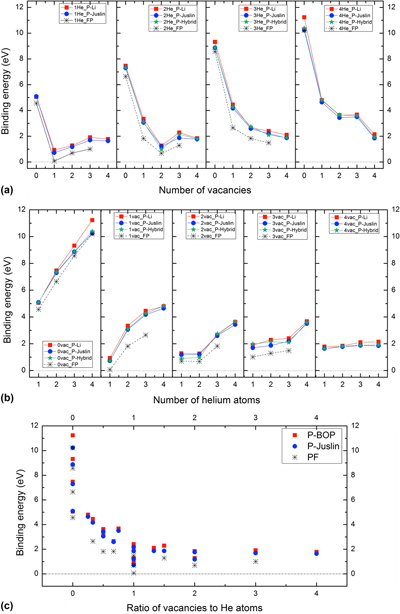Article contents
Comparison of two tungsten–helium interatomic potentials
Published online by Cambridge University Press: 28 January 2015
Abstract

We have clarified the performance of two tungsten–helium analytical interatomic potentials, one of which, developed by Li et al., is a bond-order potential, and another, developed by Juslin et al., is a combination of embedded atom method potential and pair potential. Using these two potentials, we have simulated and made a full comparison of formation energy and migration energy of different defects including helium and vacancy, binding energies of helium and vacancy with helium-vacancy cluster, surface energy, as well as melting point, with reference to the corresponding results from the first-principles and experiments.
- Type
- Articles
- Information
- Copyright
- Copyright © Materials Research Society 2015
Footnotes
Contributing Editor: William J. Weber
References
REFERENCES
- 6
- Cited by


